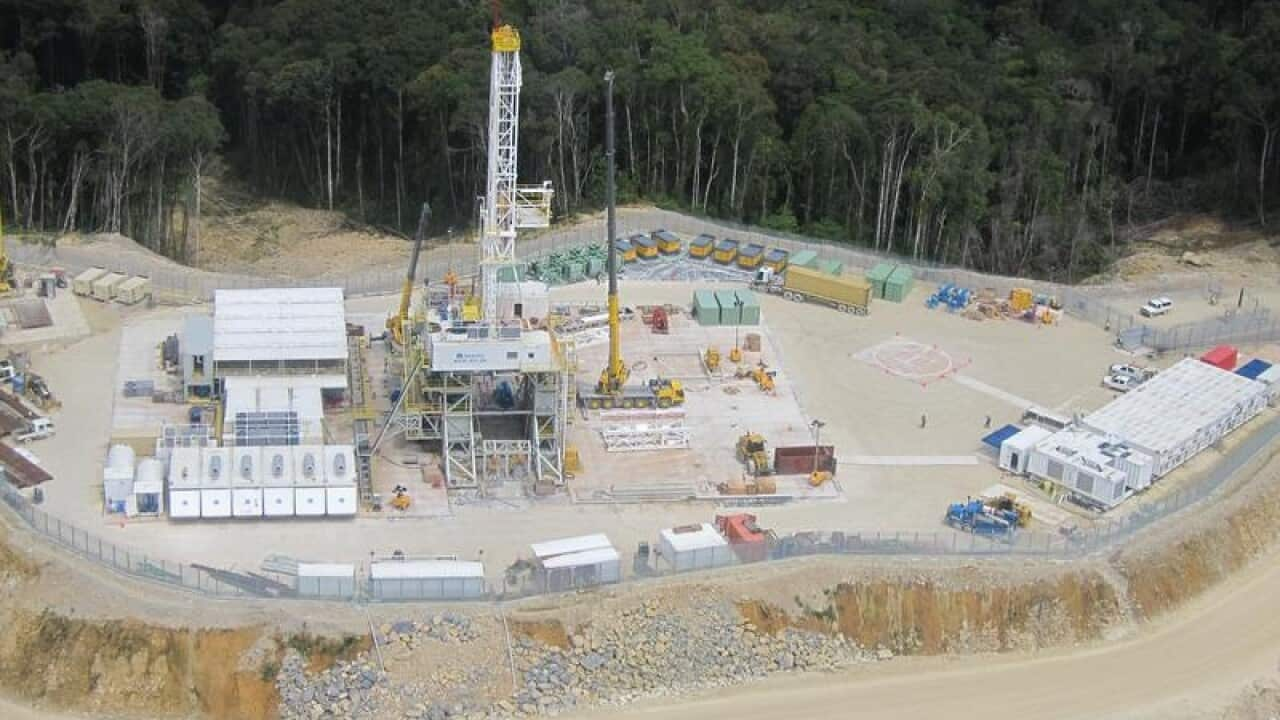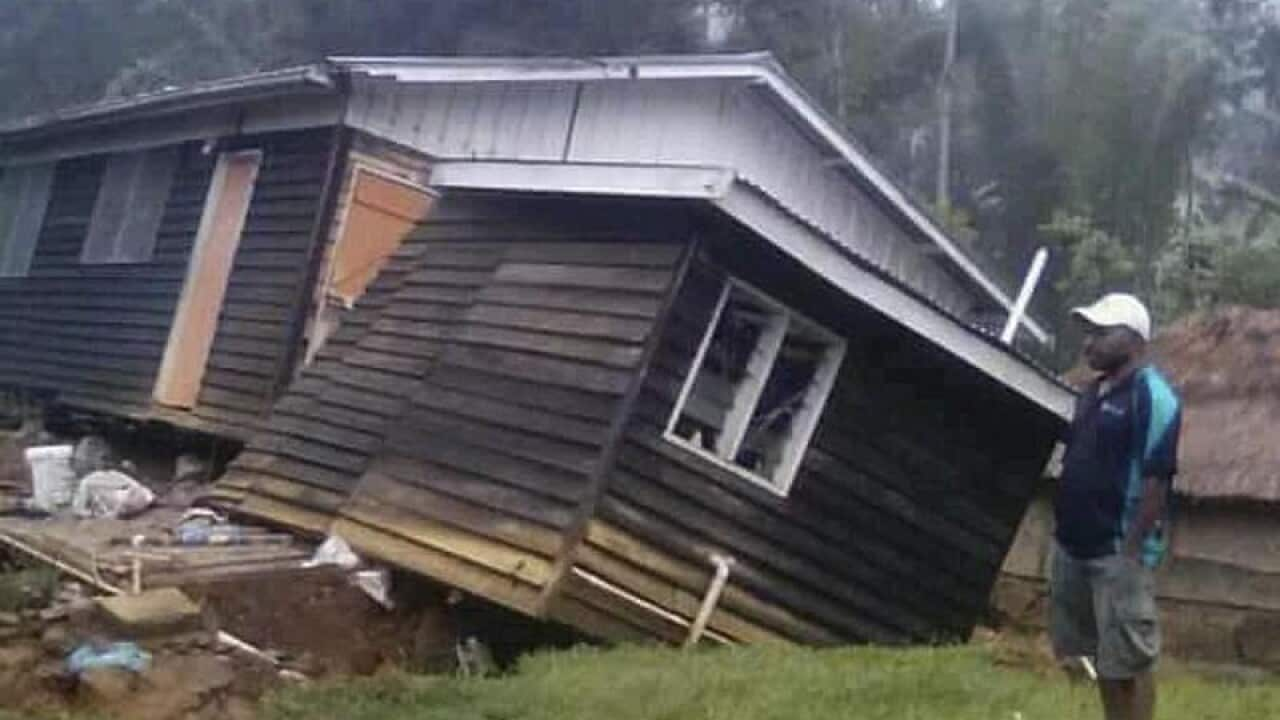Strong aftershocks continue to hit the rugged highlands of Papua New Guinea, unsettling local communities still in shock after last Monday's devastating 7.5-magnitude earthquake. A series of tremors of magnitude greater than 5 have been reported across the area.
The number of people killed and injured, and the full extent of the damage remains unclear as authorities struggle to reach the remote areas. But an estimated 670,000 people live within 100 kilometres of the epicentre.
Urgent need for basic supplies and medical care
Caritas Australia's Disaster Response and Management Officer Milton Kwaipo, is helping coordinate the relief effort in PNG and told SBS News that people are struggling without access to basic supplies and vital medical care.
"Due to the landslides caused by the earthquake, most of the houses have been covered, more than half of the fruit gardens in the affected areas have been completely covered by the landslides. Roads have been cut off, clean water sources, like rivers, have been completely covered - mostly completely covered by the landslides, and rainwater tanks - most of the tanks have been destroyed by the earthquake,” he said.
“I have a report this morning that in some places there's little to no food and water.”
RELATED READING

Eight weeks to fix PNG LNG quake damage
The rough terrain of the highlands region was already difficult to cross prior to the February 26 earthquake - the largest to hit the area in nearly a century. The quake cut off some areas entirely.
Most deaths resulted from landslides burying homes and the families inside. Radio New Zealand reported on Tuesday the death toll has risen to 75 due to the aftershocks.

Damage to a road near Mendi in Papua New Guinea's highlands region after the 7.5-magnitude earthquake. Source: Getty
State of emergency declared
PNG Prime Minister O'Neill has declared a state of emergency and announced emergency relief funds to help those impacted.
"We are putting in Tari, Koroba, Kopiago, Komo, Margarima, Mendi and Nipa, the most affected areas - two million kina each for those. And the other districts like Imbonggu, Kagua and Ialibu Pangia, Kandep, Kikori, Laiagam, Telefomin and North Fly, we are putting 1 million kina each to each of these districts,” he said.
“So district administrators can immediately use that money to intervene and make sure that we can make the lives of our people much easier."
Australia has contributed $200,000 worth of humanitarian supplies including tarpaulins and water containers, while the Australian Defence Force has conducted a comprehensive damage assessment of the area.
In a statement, the Australian government said it was providing logistical support to PNG's Defence Force as well as assisting with coordinating information and monitoring further seismic activity.
This week Prime Minister O'Neill thanked the international community for their support - particularly Australia, New Zealand, Israel, China and Japan who were quick to respond to the crisis.
Oil and gas staff evacuated
Papua New Guinea is also the site of significant liquefied natural gas operations and produces more than seven million tonnes a year.
Oil and gas giant Exxon Mobil is working to evacuate non-essential staff at some plants and said production could be affected for weeks to come.
Local explorer Oil Search announced that it has also stopped production in quake impacted areas.
Meanwhile, Milton Kwaipo from Caritas Australia told SBS News the clean-up will be difficult and time consuming.
"I really couldn't give a definite answer as to how long it would take, but it would be...it would be months,” he said. “It's just a mess now."

